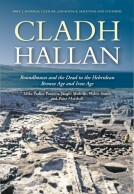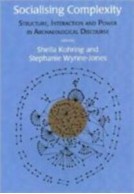Google Books previews are unavailable because you have chosen to turn off third party cookies for enhanced content. Visit our cookies page to review your cookie settings.
Cladh Hallan: Roundhouses and the Dead in the Hebridean Bronze Age and Iron Age (Hardback)
Part 2: Material Culture, Subsistence, Skeletons and Synthesis
Imprint: Oxbow Books
Series: Sheffield Environmental and Archaeological Research Campaign in the Hebrides
Pages: 464
Illustrations: 200 B/W and color illustrations
ISBN: 9798888571163
Published: 15th August 2025
Script Academic & Professional
Series: Sheffield Environmental and Archaeological Research Campaign in the Hebrides
Pages: 464
Illustrations: 200 B/W and color illustrations
ISBN: 9798888571163
Published: 15th August 2025
Script Academic & Professional
You'll be £31.96 closer to your next £10.00 credit when you purchase Cladh Hallan: Roundhouses and the Dead in the Hebridean Bronze Age and Iron Age. What's this?
+£4.99 UK Delivery or free UK delivery if order is over £40
(click here for international delivery rates)
Need a currency converter? Check XE.com for live rates
(click here for international delivery rates)
Need a currency converter? Check XE.com for live rates
This second of two volumes presents archaeological and scientific studies of a wide range of materials from the unusually long-occupied Bronze Age and Iron Age site of Cladh Hallan on South Uist in the Western Isles of Scotland. These include metalworking debris, copper-alloy, gold and iron artifacts, bone and antler tools and ornaments, flint and quartz tools, coarse stone tools, pumice, shale ornaments and fuel ash slag. The metalworking assemblage, from casting weapons, tools and ornaments, is exceptional in its size and in its being stratified within a domestic context of production. Metal tools and ornaments, some placed as special deposits on house floors, include a gold-plated penannular ring and an iron object stratified within an 11th-century BC house floor, among the earliest finds of iron artefacts in Britain.The enormous and well-preserved environmental assemblage includes faunal remains of land mammals, whales, fish, birds and marine and terrestrial molluscs. Sheep were the most numerous domestic species within an assemblage of over 150,000 land mammalian remains, and Cladh Hallan has the largest collection of canine remains for any settlement in British later prehistory. Carbonized plant remains derive principally from cultivation of barley and associated weeds of cultivation.
The site’s assemblage provides extensive material for chemical analysis of food residues, isotopic analysis of animal and human remains, osteological analysis of human remains, histological analysis of their processes of diagenesis, and genetic analysis of ancient DNA from animal and human remains. These analyses include full investigation of the human remains from two composite inhumations that had formerly been mummified, the first discovery of this mortuary practice in prehistoric Britain.
The book concludes with a synthesis of results presented in the two volumes, presenting the rich insights provided by research on Cladh Hallan into life and death in the 2nd and early 1st millennia BC.
Other titles in the series...
Other titles in Oxbow Books...


















